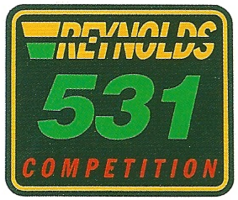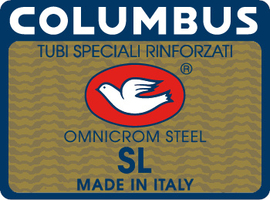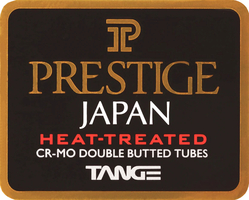Table of Contents
Tubing
Before the the coming of carbon in 1990, all mountain bikes started their life as a box of metal tubes. Before Cannondale and Klein made aluminum commonplace in 1984, 99% of all MTBs were built from steel tubing1) from dozens of suppliers, from gas pipe to Reynolds. MTBs with a quality steel sticker were a cut above the rest, and probably a lot lighter as well. How important are these stickers, other than in dating the bike? A full materials science primer will follow, but for now, consider two bicycles:
- A 2024 Huffy Classic Deluxe, complete with fenders, basket, rack and a chain guard. Single speed.
- Weight: 47 → 52 pounds.
- Cost new today: $219.99.
- A 1938 René Herse touring bike, complete with fenders, bottle cage, pump, racks front and back, light and bell. 10 speeds.
- Weight: 17.50 pounds.
Have bicycles regressed? Is the metal in the Huffy that much denser? Solid iron, maybe? Did the unobtanium tubing used in the René Herse make it weaker than the Huffy?
Strong, Light, Cheap… Pick Two. Keith Bontrager
The René Herse was made of Reynolds 531 tubing, which debuted three years before, reducing some frame weights by nearly 50%. Double butting, tempering and careful blending of alloys can produce tubing which is 10x stronger then mild steel, allowing for Reynolds 531 frames to weigh 3.75 pounds, where some of the original MTB klunkers had frames over 20 pounds.
Any of the tubing manufacturers documented here make excellent tubing and any MTB with their decals is a cut above the heavy and weak gas-pipe bikes sold in certain department stores. So, is the best tubing simply what is strong and light? Well, yes…
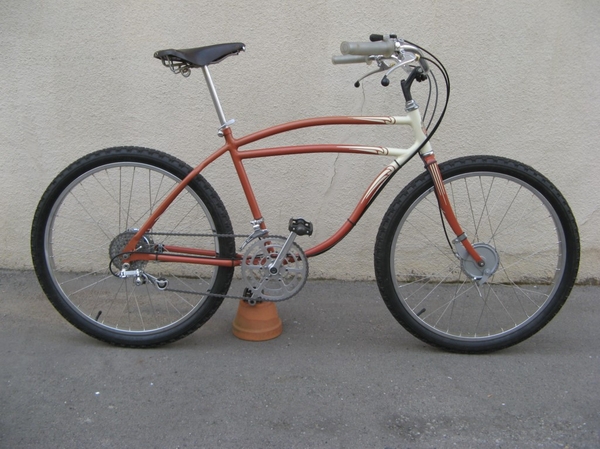
Gary Fisher's converted 1942 Schwinn Excelsior still holds the Repack course record for a rigid bike. Weight: approximately 50 pounds. More info at: Charlie Kelley's website.
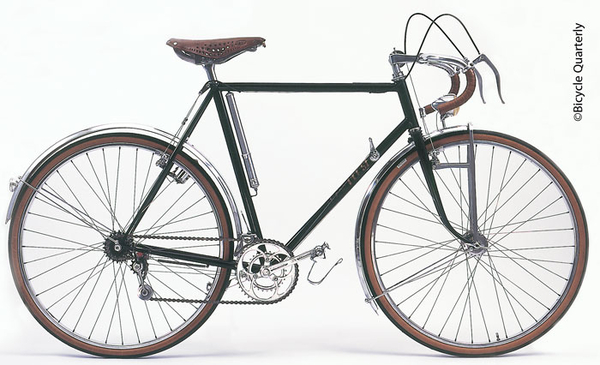
1947 René Herse, built with Reynolds 531 tubing. Since Reynolds 531 debuted in 1935, road bikes could often achieve weights under 18 pounds and remain reliable. The drillium saddle probably helped.
Overall resources:
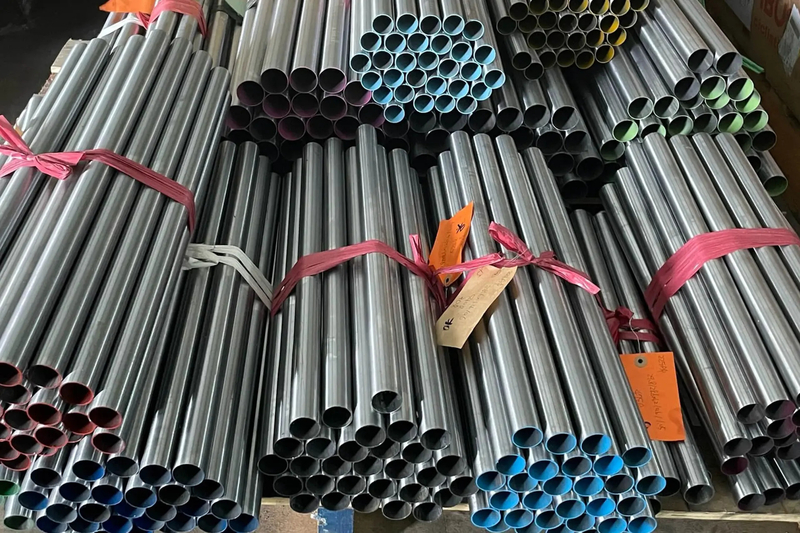
Bundles of Ritchey Logic tubing waiting to be mitered and TIG welded.
ritcheyloggic
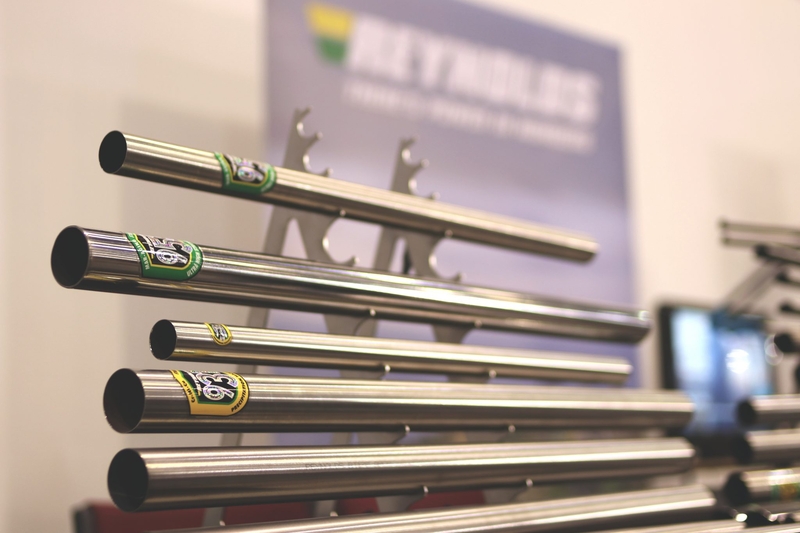
Reynolds tube sampler
reynoldstechnology
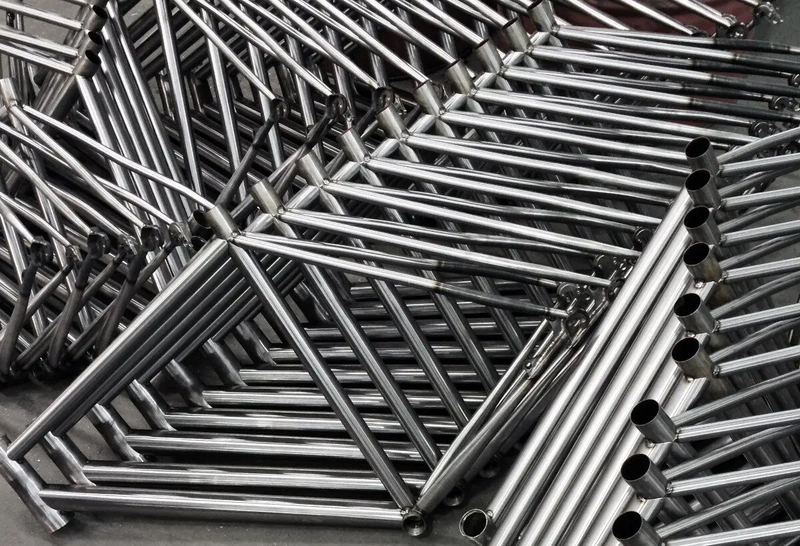
Columbus tubing on fresh frames at Mason Cycles.
base-mag
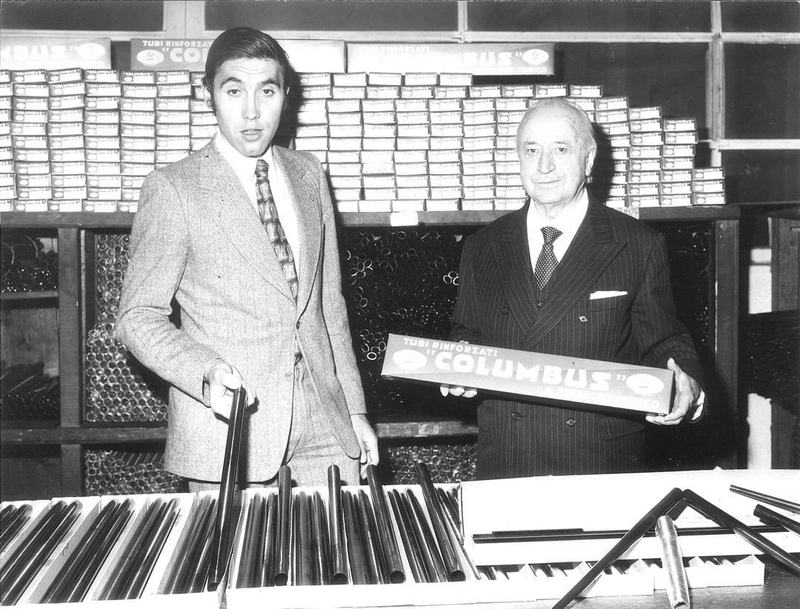
Angelo Luigi Colombo and the The Cannibal.
facebook
Decal Timelines
| Maker | 1970 | 1980 | 1990 | |||||||||||||||||||||||||||
| 0 | 1 | 2 | 3 | 4 | 5 | 6 | 7 | 8 | 9 | 0 | 1 | 2 | 3 | 4 | 5 | 6 | 7 | 8 | 9 | 0 | 1 | 2 | 3 | 4 | 5 | 6 | 7 | 8 | 9 | |
| Reynolds | 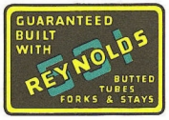 | 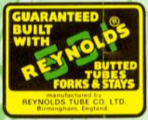 | 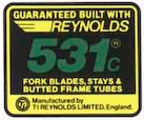 | 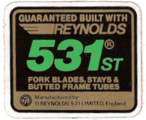 |  | 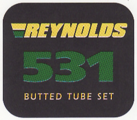 |
||||||||||||||||||||||||
| 0 | 1 | 2 | 3 | 4 | 5 | 6 | 7 | 8 | 9 | 0 | 1 | 2 | 3 | 4 | 5 | 6 | 7 | 8 | 9 | 0 | 1 | 2 | 3 | 4 | 5 | 6 | 7 | 8 | 9 | |
| Maker | 1970 | 1980 | 1990 | |||||||||||||||||||||||||||
Notes:
- Decals after 1973 had “Reynolds Tube Co Ltd”
- Decals after 1981 had “Ti Reynolds Ltd”
- Decals after 1985 had “Ti Reynolds 531 Ltd”
- Decals after 1989 had split “Reynolds” logo
- Decals after 1995 had un-split, simple “Reynolds” logo
| Maker | 1970 | 1980 | 1990 | |||||||||||||||||||||||||||
| 0 | 1 | 2 | 3 | 4 | 5 | 6 | 7 | 8 | 9 | 0 | 1 | 2 | 3 | 4 | 5 | 6 | 7 | 8 | 9 | 0 | 1 | 2 | 3 | 4 | 5 | 6 | 7 | 8 | 9 | |
Columbus 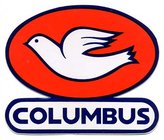 | 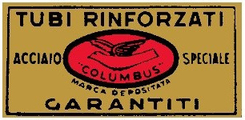 | 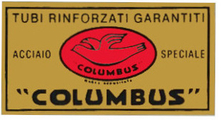 | 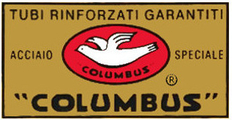 | 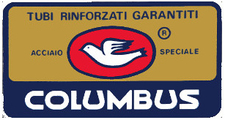 | 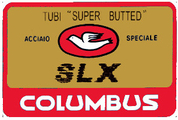 | 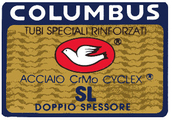 | 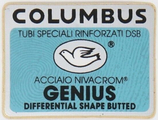 | 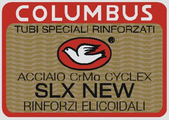 | 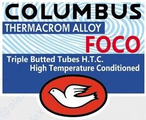 |
|||||||||||||||||||||
| 0 | 1 | 2 | 3 | 4 | 5 | 6 | 7 | 8 | 9 | 0 | 1 | 2 | 3 | 4 | 5 | 6 | 7 | 8 | 9 | 0 | 1 | 2 | 3 | 4 | 5 | 6 | 7 | 8 | 9 | |
| Maker | 1970 | 1980 | 1990 | |||||||||||||||||||||||||||
Notes:
- Early rectangular decals did not say Columbus at the bottom.
- Decals after 1972 were a red dove on gold foil.
- Decals after 1975 had a white dove on a red background.
- Decals after 1978 had a fatter dove with no name.
- Decals after 1984 often had the tubeset name.
- Decals after 1988 put Columbus at the top with a funky background.
- Starting the 1990s, decals started using some English, as in “differential shape butted.”
- Decals after this use the ® symbol, funky backgrounds, Columbus at the top and white dove. Other colors and words will change depending on the tubset. Dating these requires a set of Columbus catalogs.
| Maker | 1970 | 1980 | 1990 | |||||||||||||||||||||||||||
| 0 | 1 | 2 | 3 | 4 | 5 | 6 | 7 | 8 | 9 | 0 | 1 | 2 | 3 | 4 | 5 | 6 | 7 | 8 | 9 | 0 | 1 | 2 | 3 | 4 | 5 | 6 | 7 | 8 | 9 | |
Tange  | 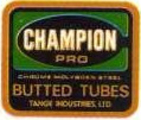 | 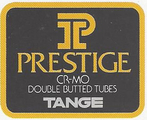 | 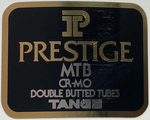 | 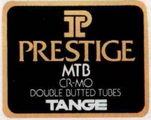 | 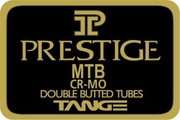 | 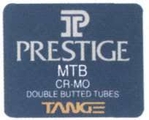 |
||||||||||||||||||||||||
| 0 | 1 | 2 | 3 | 4 | 5 | 6 | 7 | 8 | 9 | 0 | 1 | 2 | 3 | 4 | 5 | 6 | 7 | 8 | 9 | 0 | 1 | 2 | 3 | 4 | 5 | 6 | 7 | 8 | 9 | |
| Maker | 1970 | 1980 | 1990 | |||||||||||||||||||||||||||
Notes:
- 1984: Prestige introduced
- 1985: Prestige MTB introduced
- 1986: G & E letters attached in the middle, N & G partially attached
- 1993: G & E letters attached at the top, A has no cross
- 1994: Blue label
Tech Tutorial
The first Safety Bicycles of the 1880s weighed 42 pounds, with solid rubber tires and no gearing. The were built with steel tubing joined with soft iron castings. By 1897, before Reynolds double butted tubing, the safety bicycles were able to reduce their weight to as low as 22 pounds due to the creation of lighter and stronger steel alloys and pneumatic tyres. When Reynolds introduced the double butting process, it started a new era in lighter and stronger bicycles. By 1938 René Herse was producing touring bikes, complete with fenders, rack, light and bell weighing a feather light 17.50 pounds, built using thin Reynold 531 tubing.
Reynold 531 was an alloy of 98.1% Fe, 1.4% Mn, 0.30% C, and 0.20% Mo. How is this alloy composition its secret sauce? How is 531 better than other tubing? Does it better resist breaking or crimping? Is it easier to work with? More expensive? What do other manufacturers, such as Columbus use? What is strength anyway?
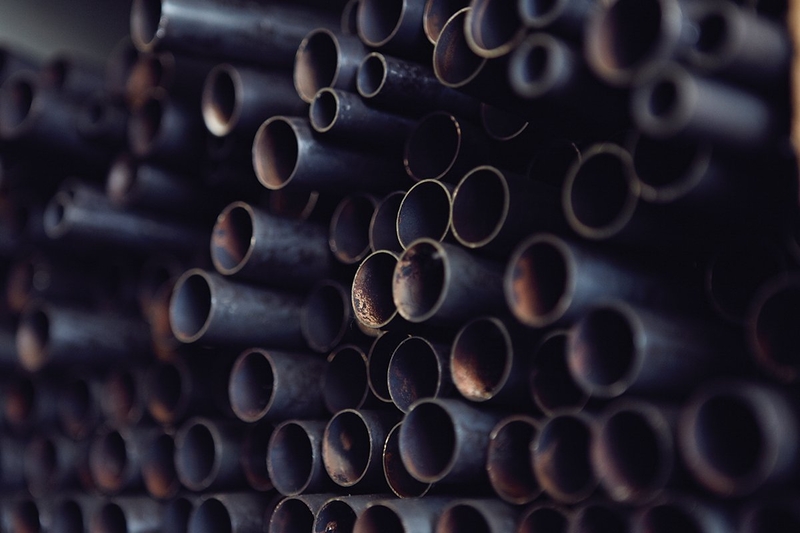
Stack of fresh Reynolds 953 tubing.
cyclist.co.uk
Material Strength: A Quick Primer
In the chart to the right –>
- stress := the amount of force3) applied.
- strain := the amount the material has deflected or bent.
- yield strength := the point where the bend becomes permanent or deformed. Think of bent tube becoming dented or creased.
- ultimate strength := the most stress a material can endure without breaking, aka “tensile strength” or “ultimate tensile strength.”
Bicycle owners should probably care more about yield strength instead of UTS (ultimate tensile strength), as a deformed tube is often thought of as a failed tube. Tubing manufacturers tend to publish UTS numbers, because they're much bigger. If the gap between the yield strength point and the fracture point is small, the material is considered to be brittle, such as glass. Else, it's elastic or ductile. For example, Reynolds 953 is 2.7 times stronger than Reynolds 531. Yet 531 is fairly elastic and is easier to repair than 953, such as by rolling tube blocks around the dent to squeeze it all back to shape 4). Young's modulus is how stiff the metal is: how much force it takes to bend5). Bending is related to fatigue limit, which is the point where bending starts to wear on the material. For steel, this is often about half the yield point. Steel can withstand an infinite6) amount of bending without wear until its bent near the fatigue limit. A well designed steel spring it will be springy until the end of time, or rusts claims it. Similarly, a well designed bicycle frame will never flex past its fatigue limit - which, of course, is very far from its yield and ultimate strengths.
Aluminum has no fatigue limit at all, so that any bending will degrade the material and cause it to fail, eventually. Typically, aluminum frames and components are overbuilt with this in mind to keep them alive for decades.
| Material | Yield Strength MPa | Tensile Strength MPa | Frame Weight 56cm |
| Cheep steel | 240 | 320 | |
| 4130 cold drawn | 482 | 655 | |
| Reynolds 525 (4130) | 600 | 700 | |
| Reynolds 531 | 695 | 803 | 2200 |
| Columbus Cromor | 700 | 750 | |
| Columbus SL, SP | 735 | 835 | |
| Columbus Niobium | 750 | 1150 | |
| Reynolds 725 | 880 | 1080 | |
| Reynolds 753 | 900 | 1100 | 1502 |
| Columbus Omnicrom | 920 | 1450 | |
| Columbus XCR | 950 | 1450 | |
| Reynolds 853 | 1000 | 1280 | |
| Reynolds 953 | 1900 | 2050 | 1300 |
| Carbon | N/A | 1600 | 1000 |
| Ti | 500 | 620 | 1542 |
| 6061 Al | 270 | 310 | 1700 |
Densities
| Material | Density (g/cm3) | |
| Steel | 7.85 | |
| Titanium | 4.48 | |
| Aluminum | 2.7 | |
| Carbon | 1.75 | |
Tech Resources:
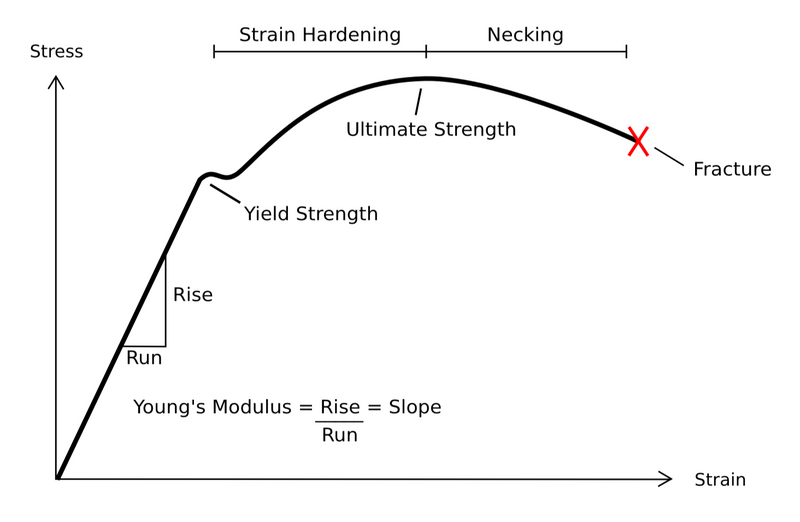
Stress vs. Strain Curve
wikipedia
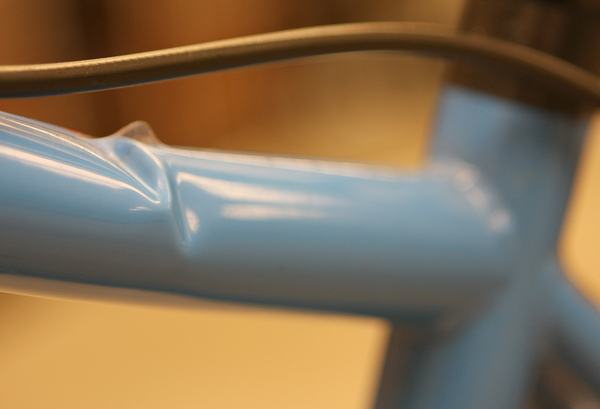
Double butted top tube crimped at the taper point.
peterverdone.
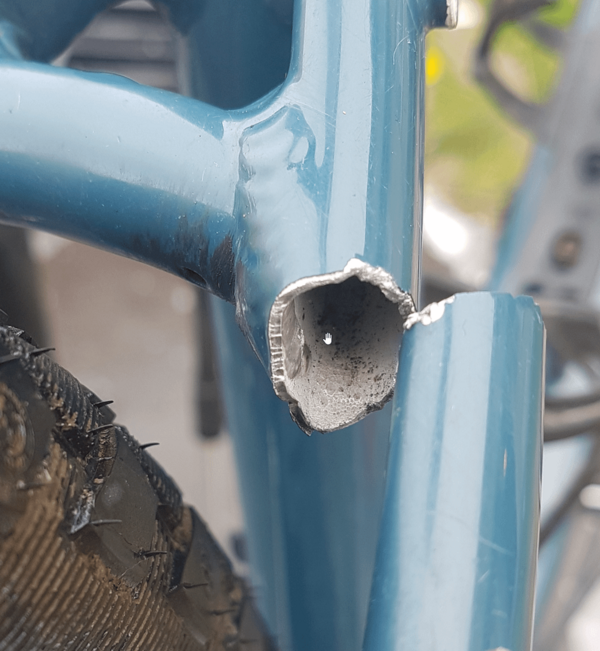
Aluminum fatigue failure at seat stay.
reddit
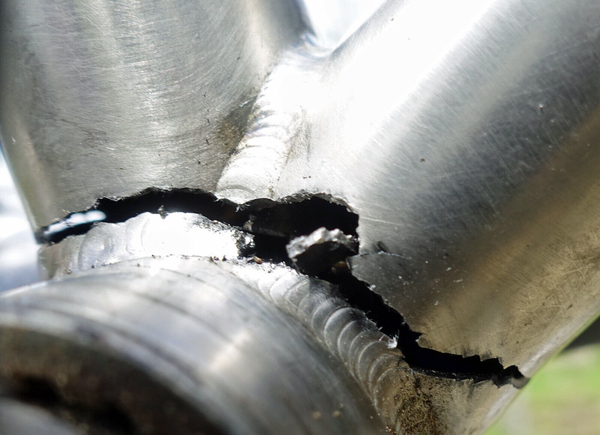
Arc welding weakens tubing at the weld points. Titanium.
ebay
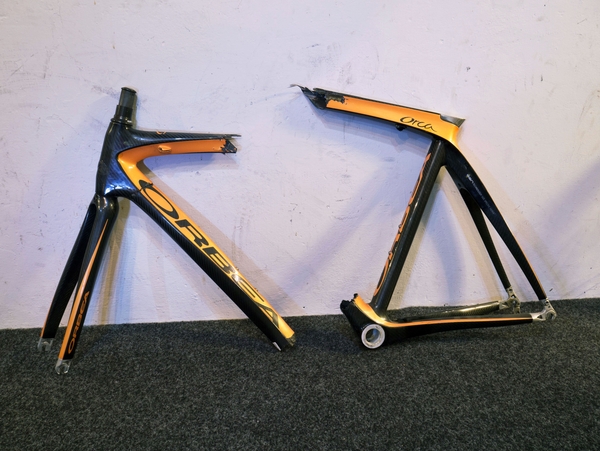
Shattered carbon.
bicycling.com
Butting

Tange butting. The shorter butt side is marked with paint.
tange-design
All quality bicycle tubing since 1898 have included double butting, which have thicker ends than in the middle, saving weight while retaining strength. A 1948 Reynolds price list has the following available dimensions and prices for 1“ top tubes7).
| Gauge | Millimeters | Price in pence | Quality |
| 19 straight | 1.07 | 28d | A |
| 20 straight | .89 | 38d | HM |
| 22 straight | .71 | 40d | 531 |
| 19 x 22 x 19 | 1.07 x .71 x 1.07 | 38d | A |
| 20 x 24 x 20 | .89 x .56 x .89 | 56d | HM |
| 21 x 24 x 21 | .81 x .56 x .81 | 60d | 531 |
This assumes that Reynolds was using the Birmingham Wire Gauge Standard8). The shorthand for these buttings is written as 1/7/1 for “A” or 8/5/8 for “531” tubing. Bicycles are often made with a mix of buttings, depending on size, style and rider weight. Today, the thinnest Reynolds 953 is available .55 x .35 x .55mm for a 1 1/8” top tube9). That is, if you can find 953, as production has been halted on that strongest of their tubing. Reynolds 531 is also no longer produced.
Gauge is old British wire measurement ostensibly in units of a fraction of an inch. Sort of. There are 55 different sets of gauges from sheet metal to music wires. Some gauge examples in fractions of an inch:
| Standard | 4ga | 12ga | 20ga |
| US steel sheet standard | .2344 | .1094 | .0375 |
| British Standard Wire Gauge | .232 | .104 | .032 |
| Birmingham Wire Gauge | .238 | .109 | .035 |
| US aluminum sheet standard | n/a | .0808 | .032 |
| US zinc sheet standard | .008 | .028 | .070 |
The use of gauge number is discouraged as being an archaic term of limited usefulness not having general agreement on meaning. ASTM International, as cited in wikipedia
Gauge Resources:
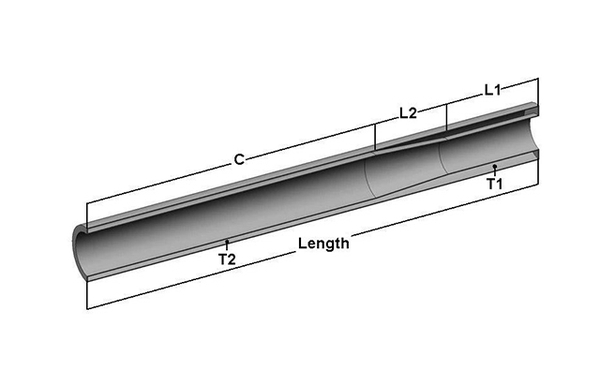
Single Butted Tube
fairing.com
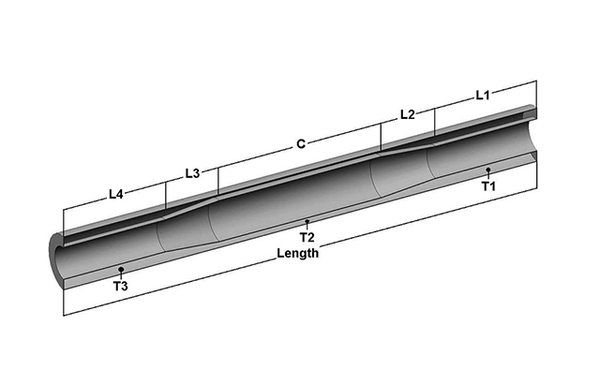
Double Butted Tube
fairing.com
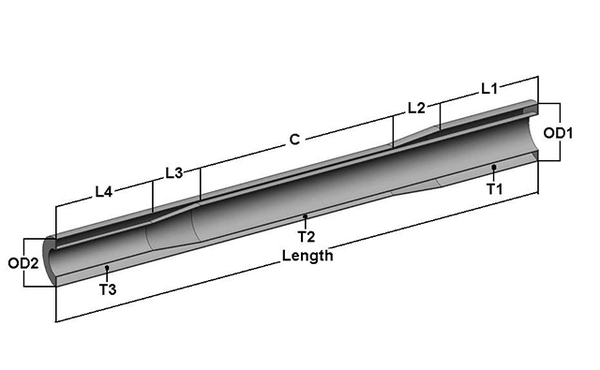
Bulge Butted Tube
fairing.com















